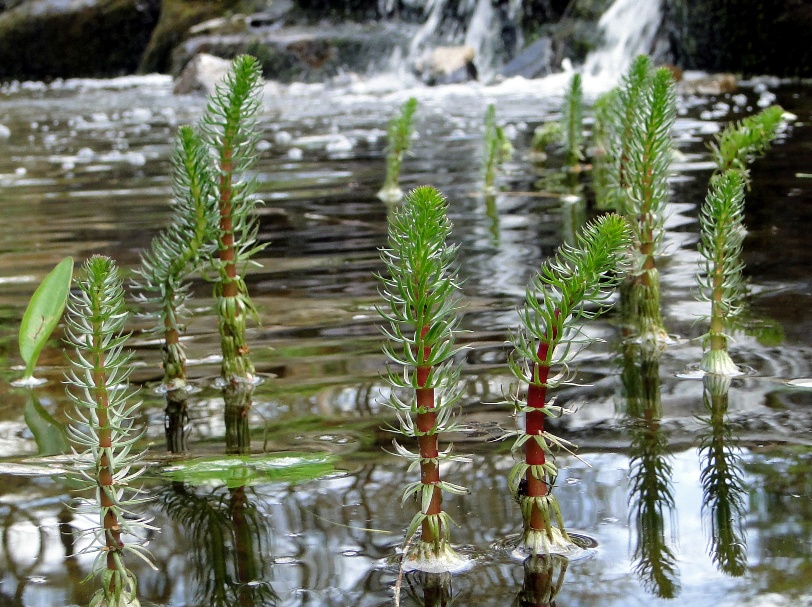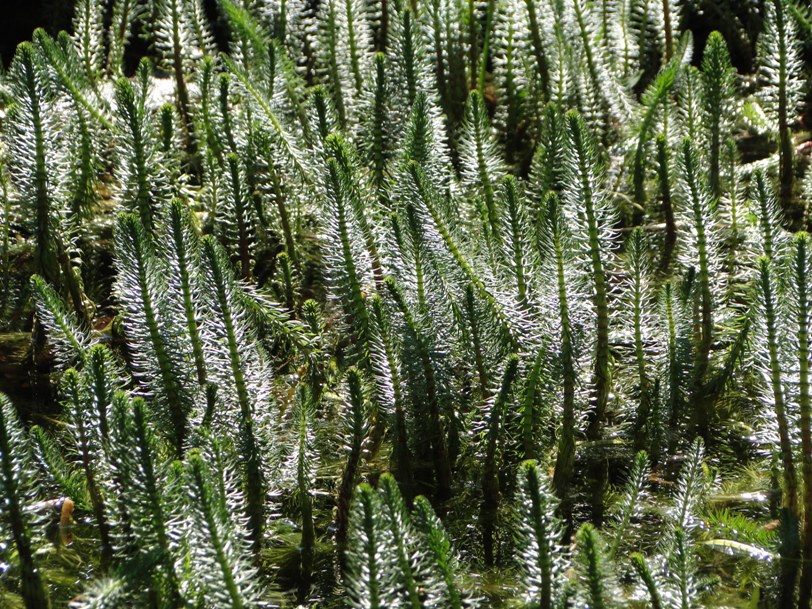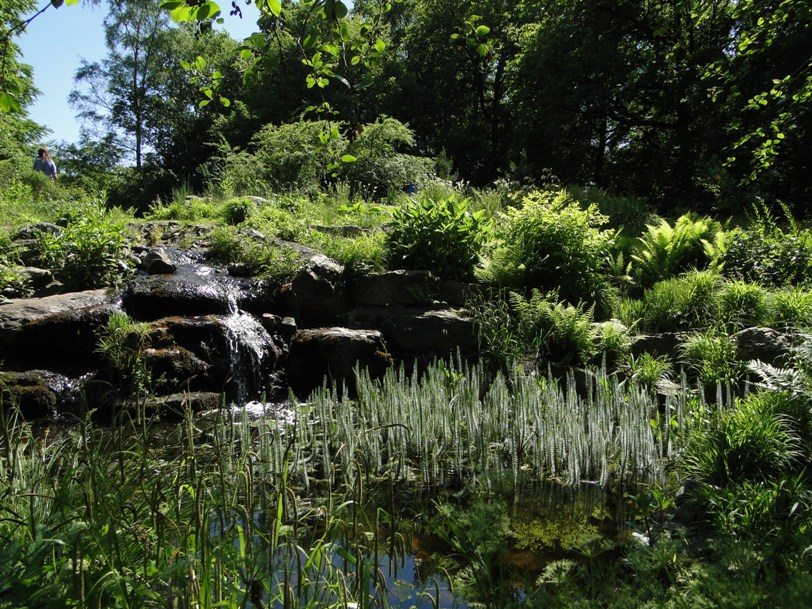Mare's-tail
Hippuris vulgaris
Plantain family (Plantaginaceae)
Underwater asparagus
It is possible that mare's-tail may appear at some time on the menu of a trendy restaurant. In the first few weeks that Hippuris vulgaris begins to spread under water using its rhizomes, it is edible and has a taste a bit similar to that of asparagus. Ducks have known this for much longer and happily eat away at it.
The botanical name is derived from the Ancient Greek hippos meaning horse, and oura meaning tail. Despite its name above the water mare’s tail looks more like a mini fir tree than a horse’s tail. The plants have articulated, hollow, tubular stems that can protrude a good few centimetres above the water surface.
Given that most of the plant is submerged, the mare's-tail is also suitable as an oxygen aerator plant in ponds. Frogs and salamanders like the mare's-tail, and young fish find protection amongst its stems.
Themes
Crown jewel in the Nijmegen Botanic Garden.
Parts of the plant and the drupes are eaten by birds; the seeds inside the drupe stick to the birds' legs and this way they are dispersed.
The young shoots look similar to asparagus and are edible.
Mare's-tail is a remarkable water plant with a symmetrical growth; also sold as an ornamental plant.
Details
| Description: | Aquatic plant, 15 - 90 cm; mare's-tail looks like a horsetail but belongs to the plantain family, and also bears flowers. |
|---|---|
| Distributions: | Cooler regions of the northern hemisphere and in the south of south america. its most northely localities are on the north coast of greenland. |
| Habitat: | Water (dune lakes, ponds, ditches, trenches, ox bows, streams, ponds and peat). |
| Year cycle: | Perennial (trees and shrubs included) |
| Flowering period: | Mei - augustus |
| Flower color: | Green |
| Notes on flowers: | The green flowers are very small and inconspicuous occuring in leaf axils above the water. |
| Notes on fruits: | One-seeded achene or nutlet; the smooth, floating seeds are 2-3 mm in size. |
Sources
http://www.floron.nl/publicaties/rode-lijst-2012,IUCNredlist.org, De groene schatkamer - Antoon Kuhlman Hortus Nijmegen isbn: 978-90-8942-0169,
http://www.floravannederland.nl/planten/lidsteng/,
http://wilde-planten.nl/lidsteng.htm



